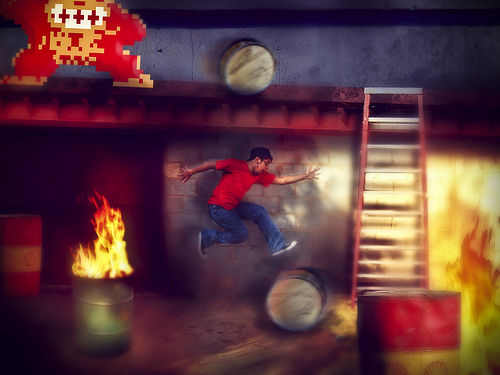Community Managers are lucky: we’re still defining our job descriptions. At the same time, a company that finds itself with a clutch of Community Managers eventually runs into the problem of where to put them. Is Community its own department? How does it relate to Support? Should it be a part of Marketing?
The answer differs depending on the company and how community benefits their products. One trend I’ve noticed runs through the video game industry: a department dubbed Player Experience.
“Player Experience” in the Games Industry
A quick glance at Linkedin shows Ubisoft, Kabam and ngmoco:) carrying the Player Experience banner. While I’m not familiar with their org structures or strategies, my understanding for at least some of these companies is that Community Manager folds into the Player Experience umbrella, along with customer support. This makes a ton of sense for a video game company, where a player community can make up a key part of the game. When you build a product around guilds and masterpieces, incorporating Community into the game creates a competitive advantage.
Not to mention an awesome product.
Riot Games, developer of League of Legends, has a Director of Player Experience and diverse Community-related job titles. Riot lists Player Support and Community as separate teams, but the signal is clear: the player’s experience outside of the game is as important as inside the game.
You won’t be surprised to learn that Steve Mescon, their Director of Player Experience, once worked for Zappos – one of the first companies to frame customer service as a marketing investment.
How Community Titles and Team Names Shift
A few years ago, when I first joined RockYou as a Community Manager, the team was brand new. It worked in parallel to a Customer Support team that already sported lots of agents. Eventually, RockYou merged the Support and Community teams, and in the process changed the Community Manager title to “Community Advocate.”
The thought process was both teams worked heavily with players and shared many goals. For a new Community team that hadn’t yet differentiated the forums from a help desk, the job description closely followed Support. In fact, at first, the largest difference was medium. One worked on forums, the other on email.
This jump happens to game companies once their Community and/or Support teams hit a certain size. You merge the 1:1 interactions for Support with the Many:Many interactions in Community, framing both as a player-focused interaction that bolsters the product.
In other cases, the Community or Support team will go through mitosis. It grows, takes on new responsibilities, then breaks off into new teams that all work towards the common mission of delighting the end user.
Framing a Community-Driven Department
For video game companies, reframing Community as a carefully curated and nurtured “Player Experience” makes the department more flexible. It can then incorporate Support, framing it as a chance for building customer loyalty and evangelizing players. It can also incorporate blogging, social media content creation and UGC initiatives.
I respect this framing because it assigns ownership of the player’s enjoyment. More importantly, it gives the department a mission. You’re responsible for creating a powerful experience.
Sometimes this will be a case of Not using the Z word. Companies may avoid a “Customer Support” title because it’s not seen as glamorous, preferring instead to call it “User Relations,” “Champion,” or, to the frustration of job searchers, “Community Manager.”
This is why the most important question you can ask during a job interview is “where does the Community Manager sit?”
Of course, you don’t have to call the department Player Experience. What’s important is that the team spends time defining that common cause.

Pingback: Online Community Management Links Roundup 28/01/2013 - Community Management Links | Blaise Grimes-Viort()